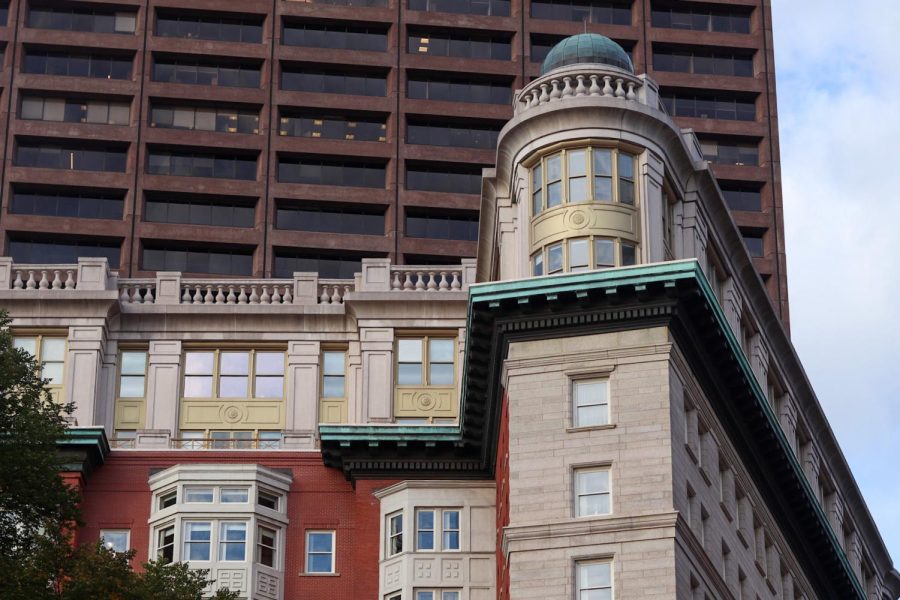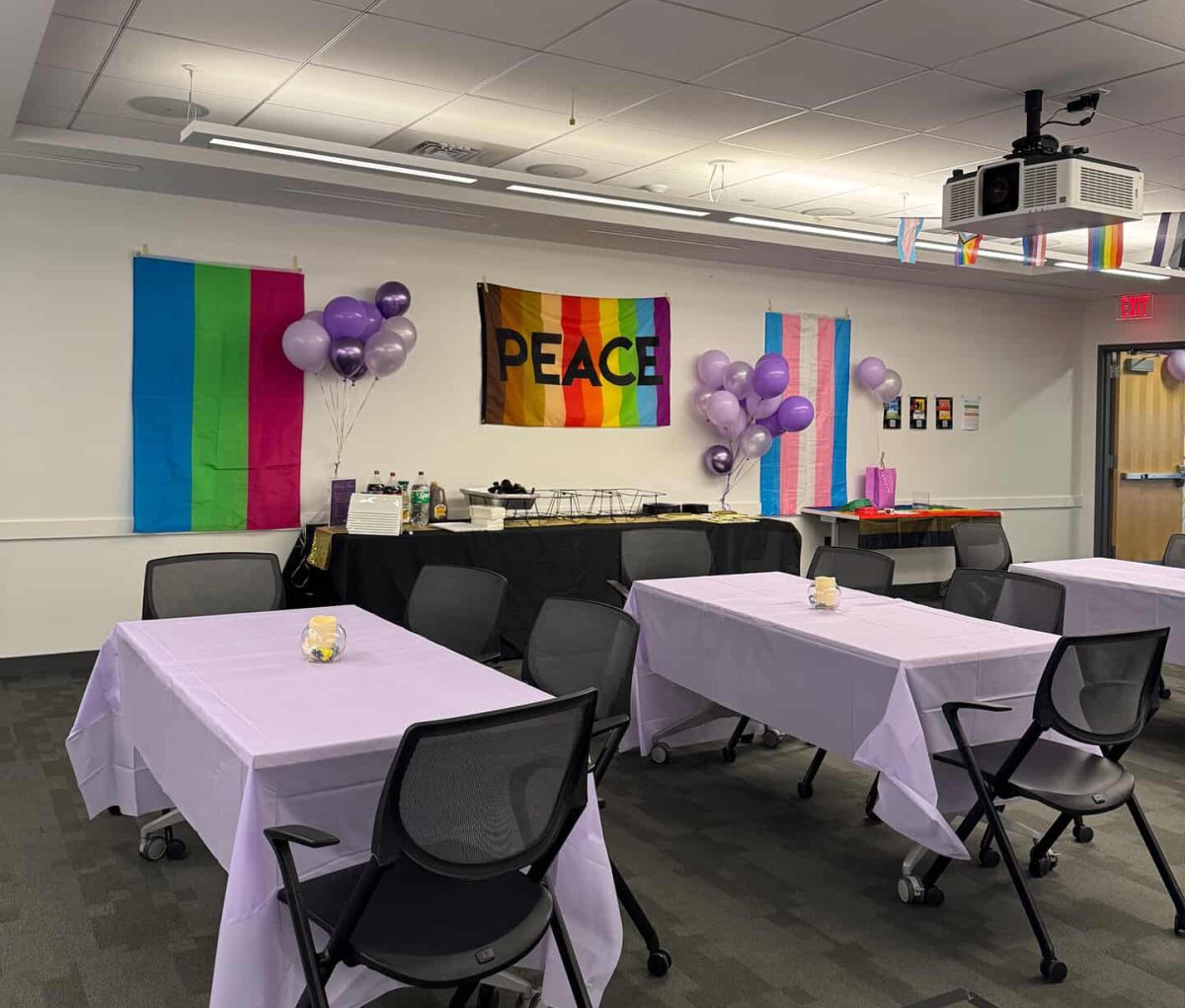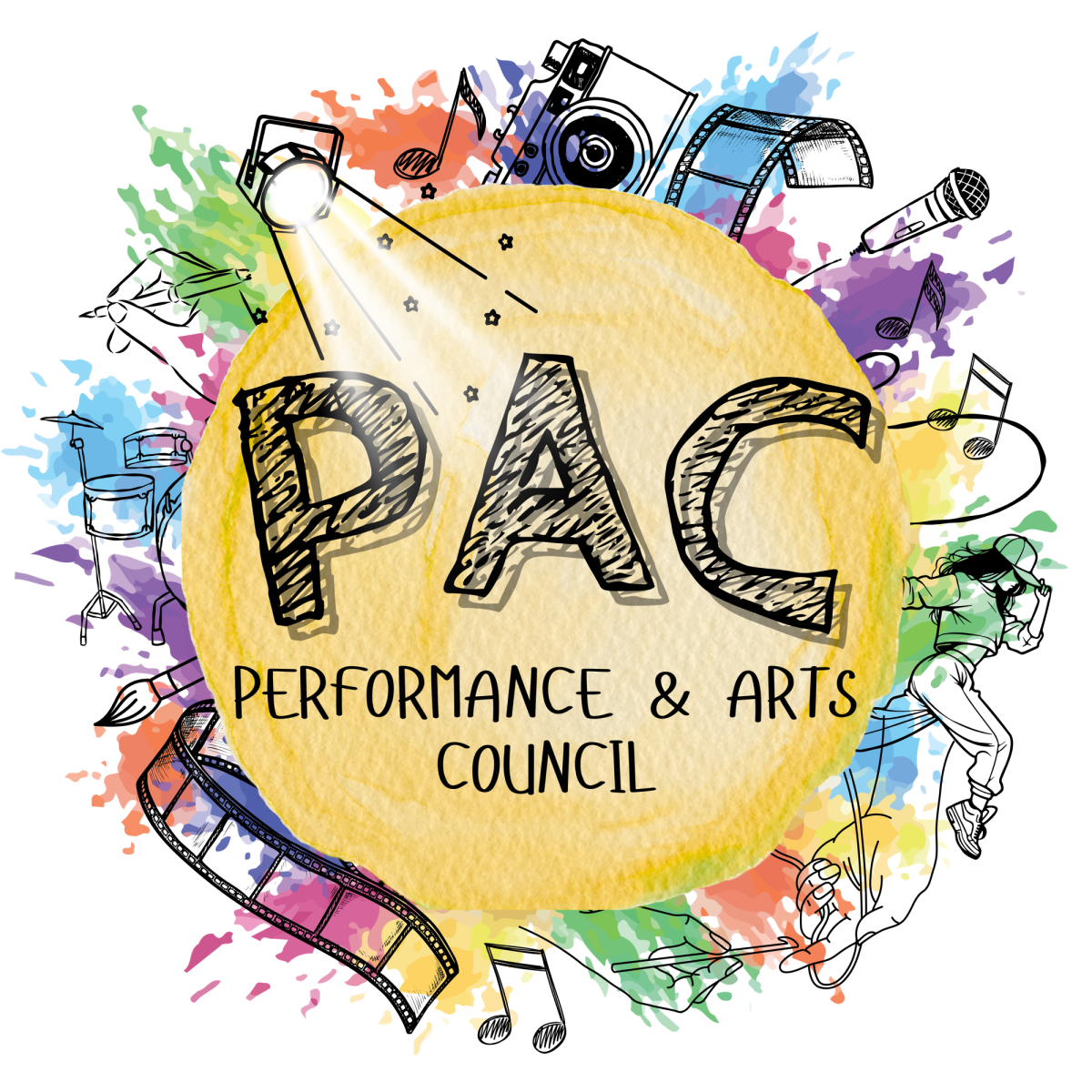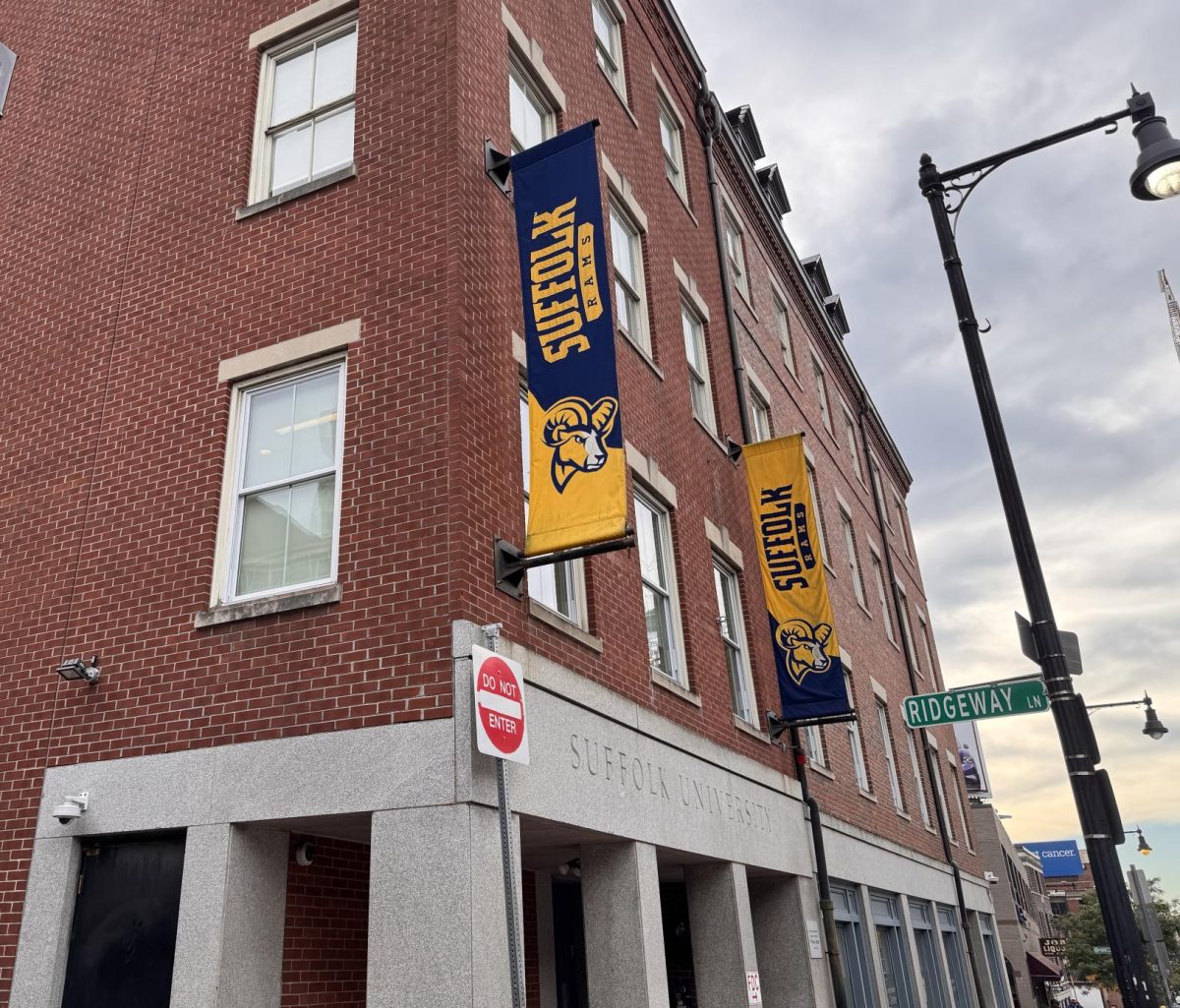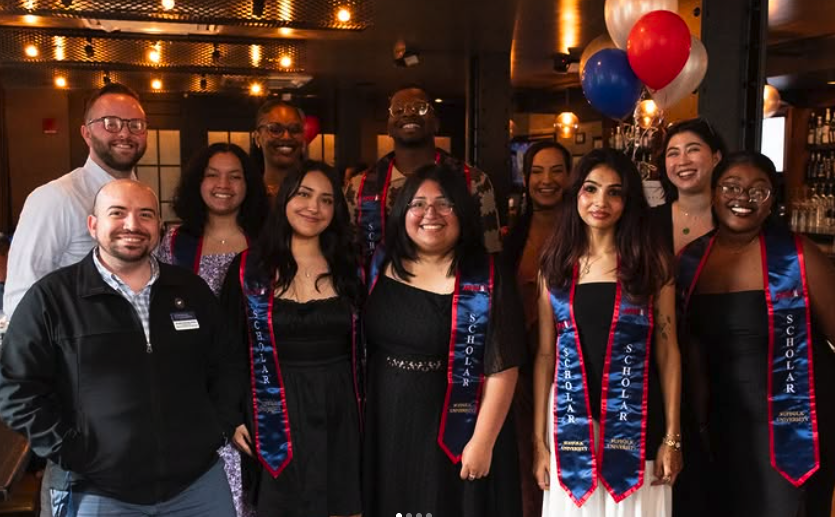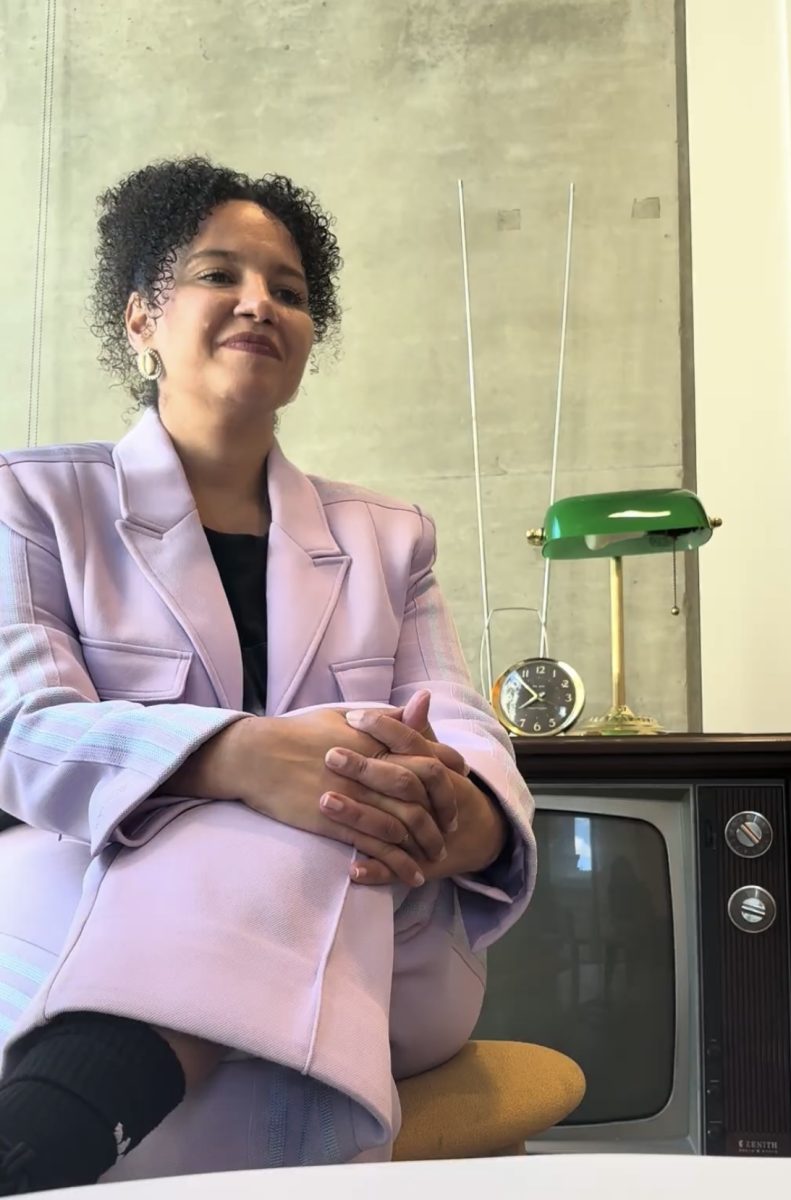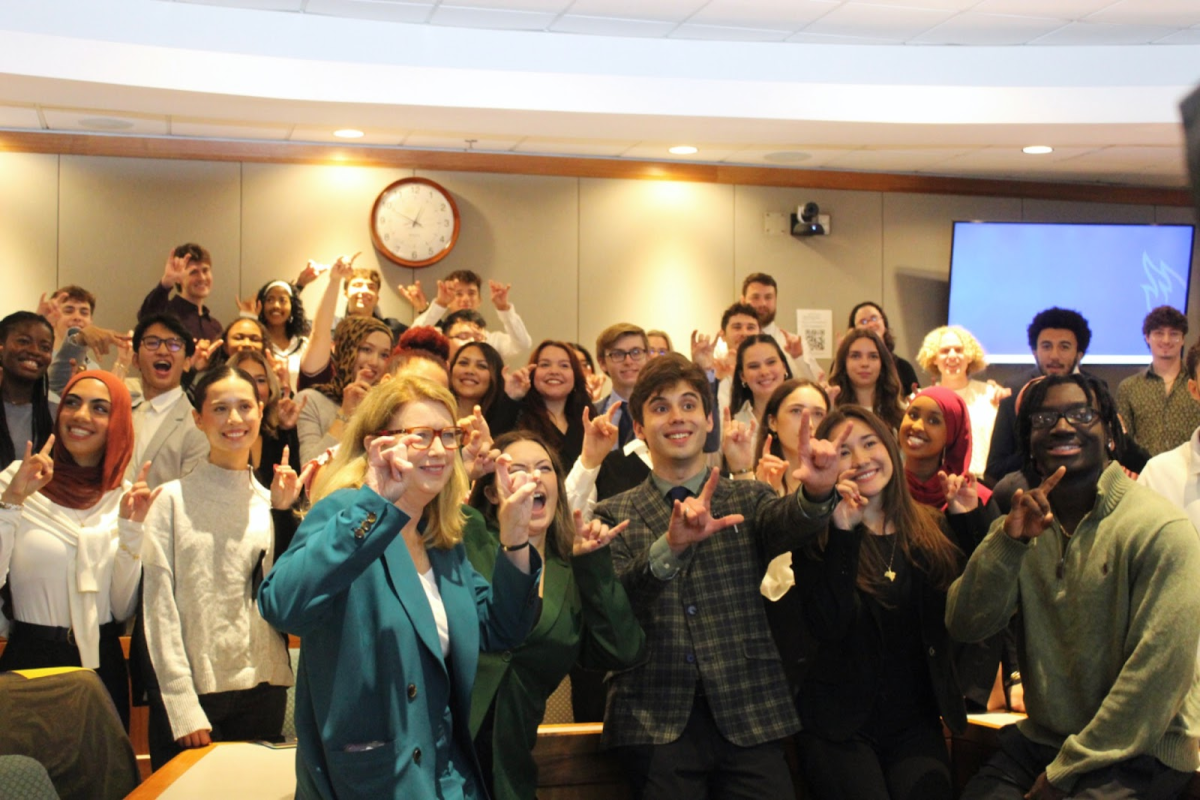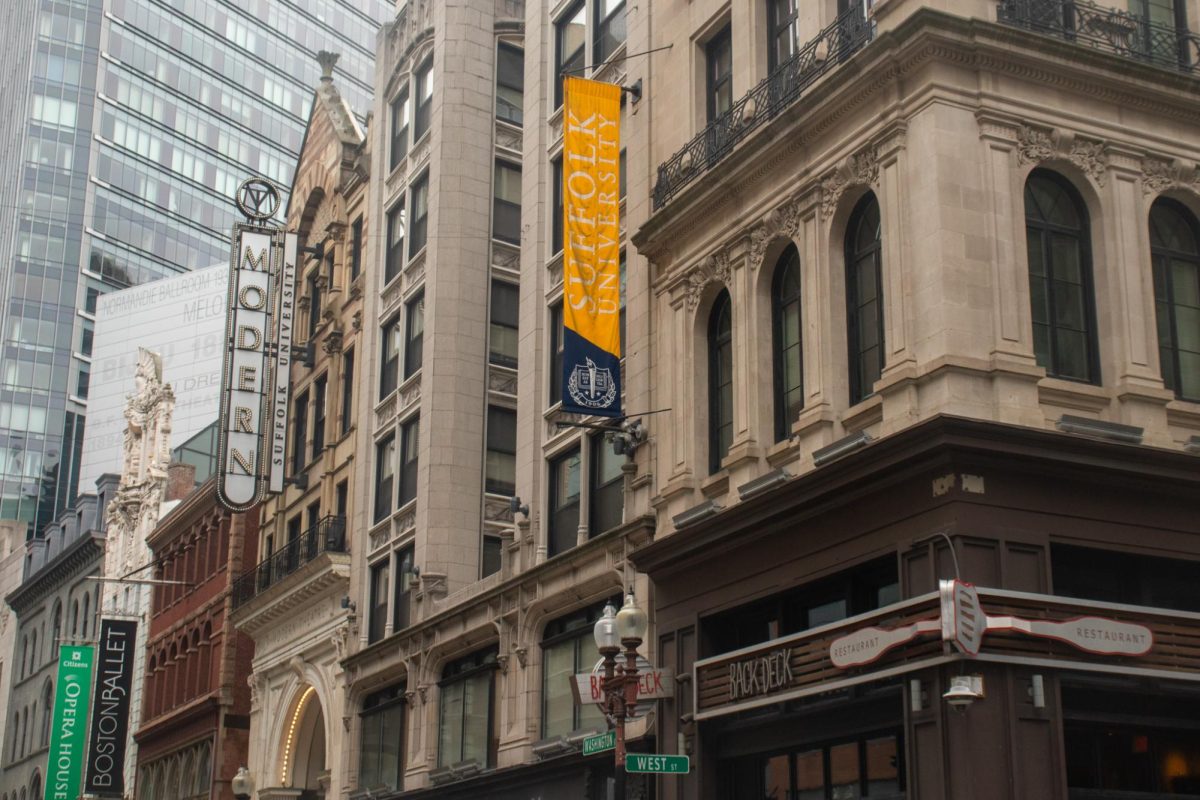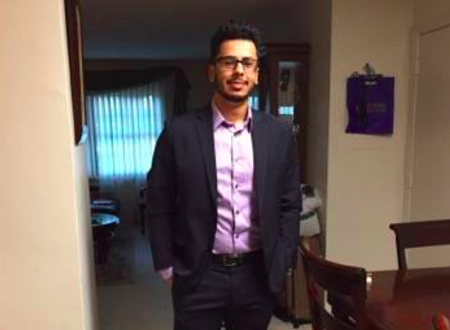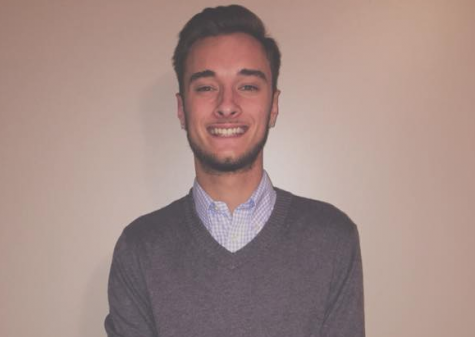For roughly two decades, the New England School of Art & Design (NESAD) inhabited 75 Arlington Street in Boston’s Back Bay neighborhood. After renovations had taken over the sixth, tenth and two bottom floors of the Sawyer building this past spring, NESAD will now be a part of Suffolk‘s main campus, and the future the university paints.
Many NESAD students have felt disconnected from the rest of the university having been so far away from the main campus space. Now that NESAD has transferred from Back Bay to Beacon Hill, the now four floors that have been allocated solely for the art school are already receiving criticism for the physical downsizing that programs may endure.
Some who are involved in the Art & Design programs were concerned about the area the new location provides. According to some, relocating the space and storage while unpacking has been difficult at times as some have said that “not every space is useful.”
Several students and faculty members have expressed concern over the size reduction of the print room compared to the one that NESAD possessed at the Arlington Street location. A NESAD student explained to a Journal reporter that the studio space for the majors used to hold about 20 students and now the new space on the tenth floor of Sawyer will hold an estimated six. In addition, Shelby Feltoon, a fine arts major, who met with a Journal reporter in the new NESAD location, was discouraged by the diminishment of space for upperclassmen fine arts students.
“Like this space, this space is the worst space in the universe, so we have to figure out what we want to do about it,” said Feltoon. “This is the Fine Arts Studio. It hurts.”
While all students will inevitably have transitionary challenges to face in the fall, Feltoon explained that she has tried to keep a loose perspective on the move, and noted that the uncertainty of the new space will be resolved with natural learning curves.
“[Students are] going to walk in there [being] a little stunned,” said Department Chair Audrey Goldstein in a recent interview with The Journal. “Like a first day in kindergarten type of thing where you don’t know where to go.”
The hope for a closer campus may still be yet to come. Seeing the sections of the building as it continued to be worked on may give some students unease, according to some within NESAD. Since the news broke that NESAD would be moving to the main campus for the fall 2017 semester, many Art & Design students have voiced their grievances over students outside of the program not being used to the sculptures and figures spread across walls and hanging from ceilings.
“I think [NESAD] is going to have to readjust to the fact that we’re going to be surrounded by students that aren’t necessarily a part of art and design community that we have built,” said junior and Student Monitor Diane Appaix-Castro. “We are pretty tight because we are so small and now it’s like all these other people are going to be joining us and it’s awesome but it’s also kind of terrifying.”
As few students have been able to see the newly unveiled renovations as of yet this summer, it has been hard to tell what the overall student reaction is, according to Feltoon, who was just re-elected as the Student Government Association Senator-at-Large for NESAD.
“I haven’t heard a ton of opinions, but I know that there is a lot of apprehension,” said Feltoon. “Some of that has to do with an immediate criticism due to seeing the space in a very raw state.”
Goldstein said she believes the new space was designed with a more applicable outlook to the department, as opposed to 75 Arlington, which she said was never supposed to be a permanent home. Students and faculty grew accustomed to the old building, molding and shaping it to fit their needs according to Goldstein, who said having space in the Sawyer building is a better deal.
The relocation from 75 Arlington has allowed both monetary resources and work space for police and Information Technology Systems once used for NESAD’s own offices to be reallocated, according to a former article published in The Journal earlier this year. Last year’s Assistant Vice President of Campus Services Jim Wallace was actively working on this project along with Andre Vega, director of construction services, to ensure the techflex classes could begin May 22 for the summer sessions.
“The moving in wasn’t complicated, the building into Sawyer was. It’s about ten thousand square feet less than what they had on Arlington,” said Vega. “The problem with the Arlington Street property that it was so remote from campus there had to be a lot of duplicated space. By having them on campus is really what saved them a lot of space.”
For Goldstein, it was a relief to move out of the Back Bay property.
“The landlord was not happy having an arts school there,” said Goldstein. “They kind of couldn’t wait for us to leave– we were in a commercial building and we’re a nonprofit institution and there was a conflict.”
Both Goldstein and Manager of NESAD’s Woodshop Jameszie Helenski have anticipated the move to include the involvement of new students in the program as well as being able to design the new spaces to suit those who will use them.
Part of making the space their own for Helenski was relocating the laser-etched plaque made in honor of the late Woodshop Manager Paul Andrade. The plaque, which was created in the fall of 2015 shortly after Andrade’s death, now hangs outside of the new space in the Sawyer basement.
“It’s not the same space in a lot of respects because now [Andrade] doesn’t have a hand in the way the shop is laid out and how it will function,” said Helenski. “It will have to change how it runs because of it now being accessible by more students, but I think it’s really nice to be able to still give him his nod and be like, this is what he contributed.”
A positive outlook that Goldstein and Helenski share is how these spaces will provide greater opportunities for collaborations across departments within the university.
“I’m looking forward to seeing how Art and Design and non-Art and Design students interact with the space and really take advantage of the tools and resources that we have down here,” said Helenski. “I feel like that was one thing people missed out on while we were down on Arlington because the shop technically was always open to any and all Suffolk students they just didn’t know what was there or didn’t feel like walking down the other end of the common.”
Goldstein hopes the students come into the fall semester ready for new opportunities to be creative, hinting at the plethora of artwork that will be featured on campus in both subtle and bold ways.
“I know what I’m going to do the first day of classes with my students, and I know what type of challenges I’m going to present them with,” said Goldstein. “But I don’t know what they’re going to come up with we’ve got to wait and see.”
Alexa Gagosz, the Editor-in-Chief, contributed to this report.


